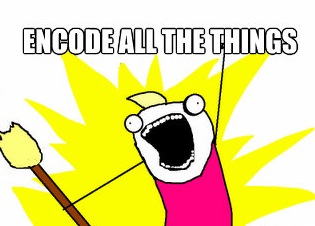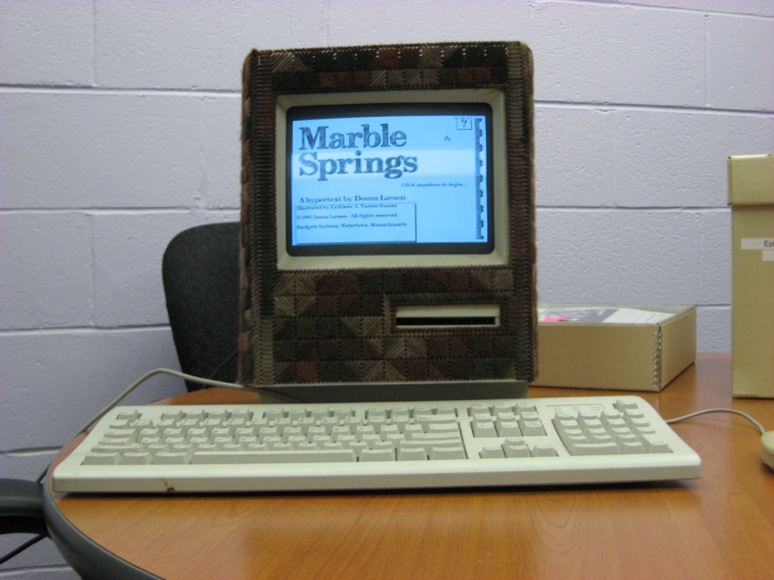As part of my final project: a website unbibliography, http://digitalliterature.net/bookhacking, providing a survey of readings on the idea of hacking the book: rewiring, reconsidering, and rebelling against the conventions of the traditional print codex, beginning with William Blake’s masterful Romantic productions. The readings cover the ways in which Blake hacked the book, how formats such as the Total Work of Art and artists’ books have further deformed the standard print tome, and how digital editions—particularly those electronically remediating Blake’s hacked books—themselves function as explosions of the conventions of the book. The readings pay particular attention to the visual design of books and online editions, treating graphical decisions as critical features of these texts and creating a catalog of opportunities and techniques for hacking the book.
I created some webpages with the documentation used by Team MARKUP: http://amandavisconti.github.com/markup-pedagogy/. The content represents almost everything we worked from during the encoding phase of our project, except some administrivia and links/images representing copyrighted content (sorry, no manuscript screenshots!).
“How Can You Love a Work If You Don’t Know It?”: Six Lessons from Team MARKUP
Posted by in Spring 2012 | Uncategorized - (9 Comments)
Encode all the things... or not. Remixed from image by Allie Brosh of Hyperbole (hyperboleandahalf.blogspot.com).
Update 4/24/2012: Oh, neat!: this post got the DH Now Editor’s Choice on Tuesday, April 24th, 2012.
Team MARKUP evolved as a group project in Neil Fraistat’s Technoromanticism graduate seminar (English 738T) during the Spring 2012 term at the University of Maryland; our team was augmented by several students in the sister course taught by Andrew Stauffer at the University of Virginia. The project involved using git and GitHub to manage a collaborative encoding project, practicing TEI and the use of the Oxygen XML editor for markup and validation, and encoding and quality-control checking nearly 100 pages of Mary Shelley’s Frankenstein manuscript for the Shelley-Godwin Archive (each UMD student encoded ten pages, while the UVa students divided a ten-page chunk among themselves).
Team MARKUP is currently writing a group blog post on the process, so I’ll use this post to concentrate on some specifics of the experience and link to the group post when it’s published.
Six takeaways from the Team MARKUP project:
- Affective editing is effective editing? One of my favorite quotations–so beloved that it shapes my professional work and has been reused shamelessly on my Ph.D. exams list, a Society for Textual Scholarship panel abstract, and at least one paper–is Gary Taylor’s reasoning on the meaningfulness of editing:
“How can you love a work, if you don’t know it? How can you know it, if you can’t get near it? How can you get near it, without editors?”*.
Encoding my editorial decisions with TEI pushed me a step closer to the text than my previous non-encoded editorial experience, something I didn’t know was possible. My ten pages happened to be the first pages of the Creature’s monologue; hearing the voice of the Creature by seeing its true creator’s (Mary Shelley’s) handwriting gave me shivers–meaningful shivers accompanied by a greater understanding of important aspects of Shelley’s writing, such as the large editorial impact made by her husband Percy and the differing ways she crossed out or emphasized changes to her draft. Moving between the manuscripts images and the TEI encoding–so similar to my other work as a web designer and developer–also emphasized the differences in the writing process of my generation and the work that went into inscribing, organizing, and editing a book without the aid of a mechanical or digital device. (more…)
Dissect and Rebuild: Reimagining Frankenstein as E-Lit
Posted by in Spring 2012 | Uncategorized - (4 Comments)For our group teaching tomorrow, Kristin Gray, Kathryn Skutlin, and I will begin class by demoing various forms of e-lit, followed by an e-lit exercise where you’ll re-imagine a pivotal scene of Frankenstein through the possibilities of e-lit (we’ll pass out handouts in class, but if you want a digital copy you can download this or see the assignment on my personal blog).
E-lit mentioned in class:
- Both Michael Joyce’s afternoon and Deena Larsen’s Marble Springs can be purchased from Eastgate Publishing. Or… make an appointment with MITH to read these and more e-lit on the original hardware, or visit the Deena Larsen Collection site to read more about Larsen’s work or watch a short video demo of Marble Springs.
- Larsen’s “Fun da mentals: Rhetorical Devices for Electronic Literature” is a fantastic site teaching basic approaches to writing e-lit.
- Caitlin Fisher’s These Waves of Girls is a 2001 Flash-based work.
- The Urban 30 is an example of a “fictional blog” based on WordPress (just like this site–well, the WordPress part!); in this case, multiple writers uses the blog community to write in as fictional characters. Urban 30 is particularly interesting because it tells a superhero story, a genre that was born and lived for a long time solely in comic books.
- The 21 Steps is a story told through Google Maps. Notice how this platform complements how important location is to the story.
- “Haircut” uses YouTube to create a choose-your-own-adventure video. If you’re curious how to do this, check out this tutorial on creating annotated YouTube videos.
- Stories created using texts and Twitter have taken off; “mobile phone novels” are especially popular in Japan, where this article claims they’ve “become so successful that they accounted for half of the ten best-selling novels in 2007.” This short article gives a sense of the kinds of stories people write via Twitter.
- In addition to individual-authored Twitter stories, large groups of strangers have used this platform for communal writing. The LA Flood Project was an event that encouraged Twitter users to tweet (with an #laflood hashtag) as if they were experiencing an apocalyptic flood in L.A. This page gives the brief timeline participants were supposed to follow; you can search Twitter for #laflood to see the story unfold, though it was most exciting in real-time (the latest tweets are just people rehashing the week-long event).
- And finally, the Electronic Literature Organization (ELO) hosts the Electronic Literature Collection 1 and Collection 2, which display a wide variety of approaches to electronic writing.
Digitally Dissecting the Anatomy of “Frankenstein”: Part One
Posted by in Spring 2012 | Uncategorized - (4 Comments)A two-part blog post: the first post will cover grabbing and analyzing Twitter and other textual data and working with them in Wordle and TextVoyeur, and the second will use these tools to consider the function of body parts in Mary Shelley’s Frankenstein.
You might be interested in this essay by Jon Saklofske that evaluates the Blake Archive and imagines new ways of visualizing its content.
 Also: how do doppelgangers fit into our definition of the monstrous?
Also: how do doppelgangers fit into our definition of the monstrous?




